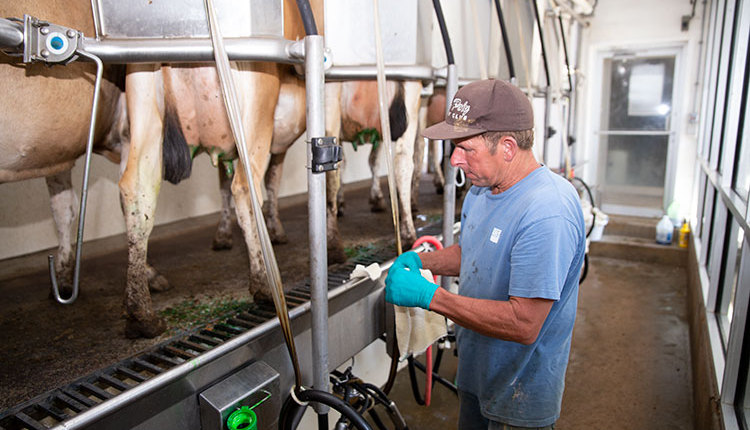
Three dairy producers shared their thoughts from this past week after reading the item "Margin Protection Program not working ideally."
- The Editors.
MPP missed the most important issue for dairy farmers: the real deference between the cost of production and the farm gate price. Of course, if USDA were to calculate it like they do for the MPP, it would still be a loss and unworkable!!
- Tom Monteith, Granville, Massachusetts
The USDA Secretary of Agriculture's job description is to keep this cheap food policy going. He answers to the President of the United States, not the farmer such as you and I. Knowing this reality to be true, chances are slim he would adjust the MPP equation to reflect the true cost of feed when all that would do is cost the taxpayer money. He already got the milk for free. What incentive is there to keep the U.S. farmer profitable when dairy importation floodgates are about to open?
The USDA Secretary of Agriculture has known for decades that the cost of production the USDA calculates is in the mid $20s per hundredweight (cwt.), yet what does he do about that? Nothing. Just like he will do nothing about this. USDA is not on our side. It's time we farmers realize that.
- Mike Eby, Pennsylvania.
Your article "Margin Protection Program not working ideally" offers a great illustration of why the National Milk Producers Federation (NMPF) is not the voice of dairy farmers that they claim to be. While Robert Wellington of Agri-Mark has submitted a letter seeking changes that would actually benefit its members through addressing MPP feed cost calculations that utilize crop farmers' sale prices and not dairy farmers' purchase costs, NMPF's letter simply seeks more time to convince farmers to sign up for this failed program by deceptively citing a busy fall harvest season. The contrast is stark.
It has become obvious to me that NMPF's rollout of Foundation for the Future (FFTF) was nothing more than a ploy to kill the Costa-Sanders bill, developed by Holstein Association USA, which was gaining traction at the time. NMPF knew all along that FFTF could be easily neutered by making it voluntary and removing the market stabilization provisions . . . rendering it impossible to offer any kind of meaningful margin insurance.
Why would NMPF do this? Look no further than the makeup of their board of directors. Nearly half are either CEOs or general managers of their respective processing cooperative. Several share an active membership in IDFA (International Dairy Foods Association). Others are handpicked directors that will vote the desires of cooperative management. They want cheap milk and lots of it. Any kind of market stabilization through supply reductions is a nonstarter for them. The only solution they offer is reliance on the fickle world market.
I commend Mr. Wellington's efforts to bring attention to MPP's flawed feed cost calculations. However, the conflict of interest created by Agri-Mark's involvement in NMPF probably prevented him from addressing the other half of the equation. Analysis of MPP's calculation of the All-Milk price would likely show an even greater deviation from reality than do its feed costs, as it does not account for involuntary deductions such as cooperative reblends, hauling surcharges/stop charges, and the milk promotion checkoff. This, in addition to the calculated $1.61 adjustment to feed costs, could be the difference in making MPP a meaningful margin protection option for dairy farmers.
Unfortunately, no such option is on the horizon. USDA will not voluntarily fix this for us. They want cheap food as well. Until we dairy farmers can come together with a voice that actually reflects our best interests, there are too many in our current leadership working against them.
- Derek England, Missouri
(c) Hoard's Dairyman Intel 2015
September 28, 2015








